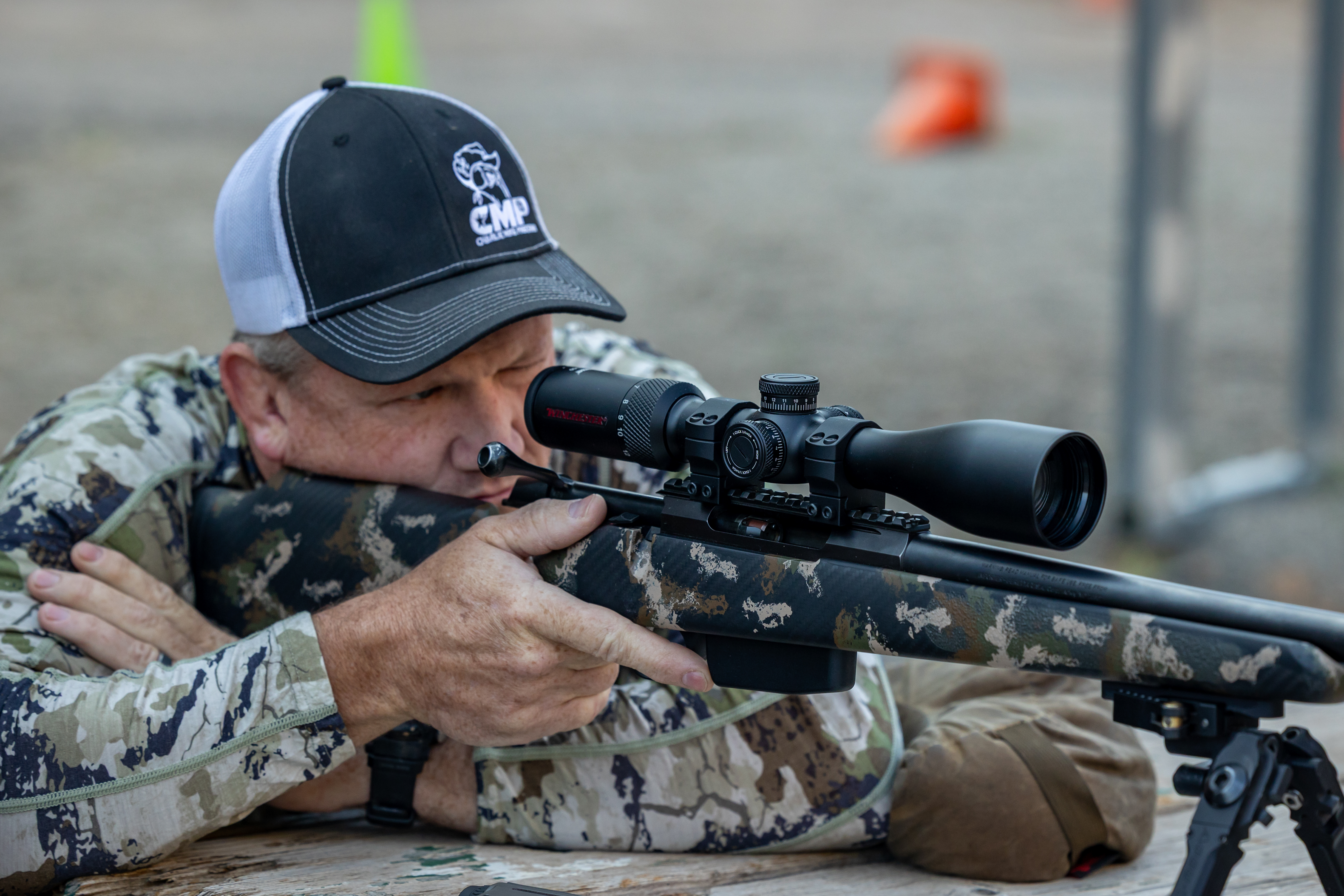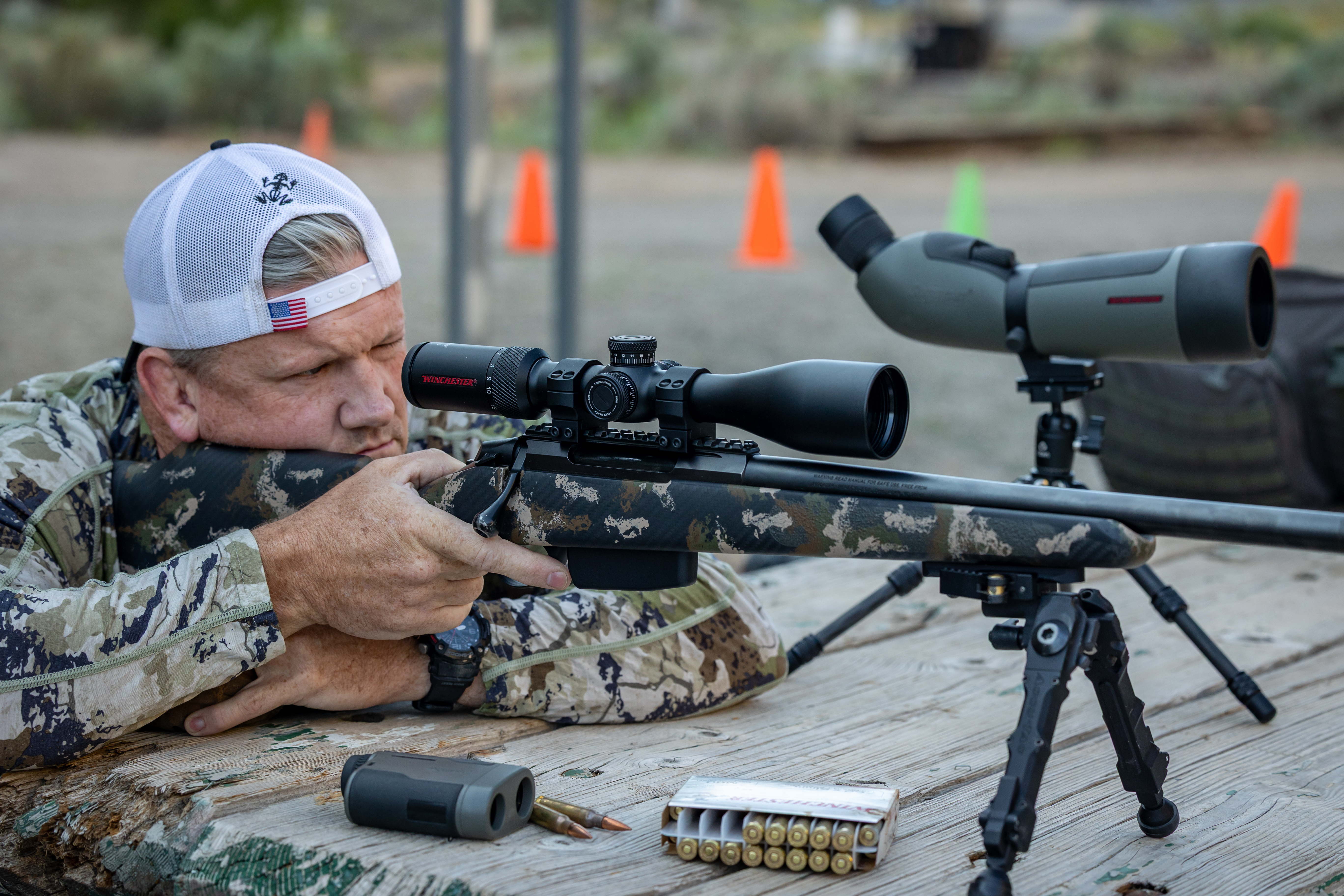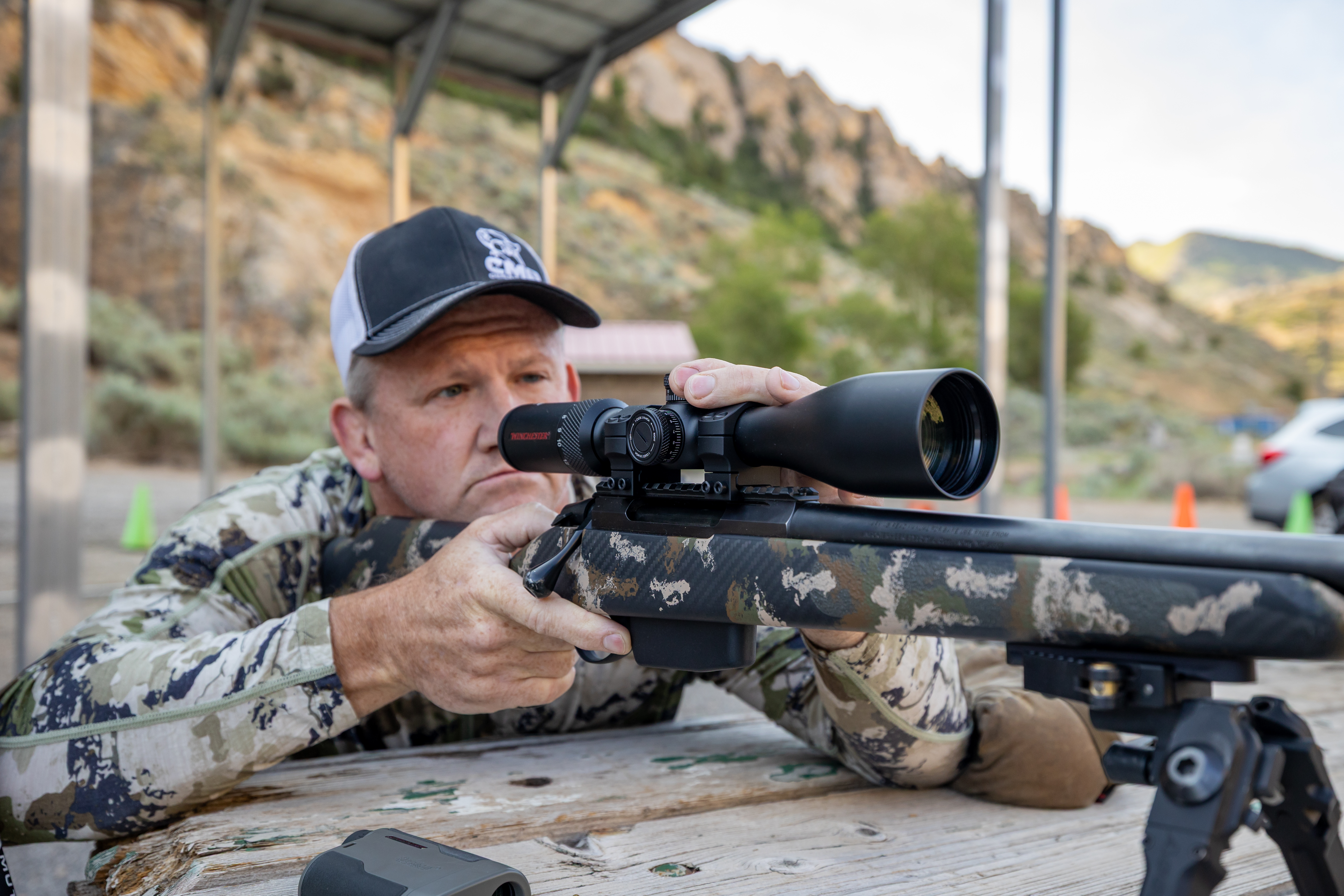How to Choose the Perfect Riflescope for You
Choosing the right riflescope can feel overwhelming, especially with so many options available. Understanding your shooting needs and exploring magnification and reticle choices will help you make a confident decision. This guide will simplify the selection process, addressing common concerns like budget and brand preferences. By the end of this article, you'll have the knowledge to choose a riflescope that enhances your shooting experience, ensuring you can focus on what truly matters—enjoying your time outdoors.
Understand Your Shooting Needs
To select the right riflescope, I start by identifying my primary shooting activity, whether it’s precision targeting or general hunting. I then determine the typical range of my shots and consider environmental conditions like glare or lighting. Lastly, I evaluate my experience level, which informs my choice of magnification and field of view to ensure optimal performance.
Identify Your Primary Shooting Activity
Identifying my primary shooting activity is essential in choosing the right riflescope. If I’m focused on long range shooting, I need a scope that offers precise adjustments and high magnification. For general hunting, I might prefer something that provides a wider field of view, ensuring I can quickly acquire targets with just my naked eye. Understanding how I plan to use the scope allows me to select features that match my shooting style while also considering the warranty options available, as reliability is key for a serious shooter.
Determine the Typical Range of Your Shots
Understanding the typical range of my shots is critical when selecting a riflescope. For instance, if I primarily engage in hunting at distances under 200 yards, I need a scope that offers adequate brightness and a clear eyepiece for quick target acquisition. Conversely, when working in law enforcement or targeting at longer ranges, I require gear that allows for precise adjustments, ensuring I can accurately hit targets from a distance without compromising visibility.

Consider Your Environmental Conditions
Considering environmental conditions is crucial when I select a riflescope. Factors like glare from the sun, changing light, and even wind can significantly affect my accuracy. For instance, if I'm plinking or engaging in long-distance shooting, I look for scopes with optimal eye relief to mitigate recoil impact and ensure I can maintain my position comfortably. Additionally, I always check the windage adjustments to make necessary changes based on real-time conditions, allowing me to stay focused on hitting my target without distraction.
Evaluate Your Experience Level
When evaluating my experience level, I consider my proficiency with different calibers and shooting scenarios, such as deer hunting or using a carbine. If I’m a beginner, I might prioritize ease of use and clarity in the optics, focusing on riflescopes with minimal parallax that allow for quicker target acquisition. For more advanced shooters, sophisticated options, including varied prisms and adjustable settings, provide the precision needed for greater distances and specific shooting techniques.
Explore Magnification Options
Choosing the right magnification for my riflescope hinges on understanding fixed power versus variable power scopes. I assess my particular needs, such as ballistics and visibility, to find the ideal magnification range for activities like deer hunting. I’ll also explore common magnification ranges suited for different scenarios to ensure my optics perform optimally, regardless of the distance or conditions.
Fixed Power vs. Variable Power Scopes
When deciding between fixed power and variable power scopes, I consider how each option suits my shooting needs. Fixed power scopes are user-friendly and often deliver a brighter image with better clarity, which is essential when tracking elk or similar game, allowing for quick adjustments at close distances. In contrast, variable power scopes offer versatility, enabling me to adapt magnification for both target shooting riflescopes and steady law enforcement scenarios, making it easier to transition between close-range and long-distance shots while ensuring optimal eye relief and comfort.
Determining the Right Magnification for Your Use
Determining the right magnification for my use starts with considering the distance I typically engage targets. As a responsible shooter and a member of the National Rifle Association, I recognize that lower magnification (around 1-4x) is ideal for closer shots, allowing me to maintain a clear view without losing track of my target, similar to using iron sights. For longer distances, I might opt for higher magnification (10x or more), ensuring I can make precise shots beyond 300 yards while keeping my gun barrel steady, which is essential for accuracy during shooting activities.
Common Magnification Ranges for Different Activities
When selecting a riflescope, I find that understanding common magnification ranges is crucial for matching my activities. For short-range shooting, such as target practice or varmint hunting, I typically choose a magnification of 1-4x, which allows for a wide field of view and quick target acquisition. In contrast, for hunting larger game at distances over 300 yards, I lean toward scopes with higher magnifications, such as 10-15x, ensuring that I can precisely assess my aim and make accurate measurements with my cartridge's trajectory in mind, all while maintaining a comfortable angle of view that supports a steady shot.
Assess Objective Lens Size
The size of the objective lens plays a key role in my riflescope's performance, particularly in light transmission, which directly impacts my sight in various conditions. I consider ideal objective sizes based on my shooting environment, from low-light situations to bright, sunny days. Additionally, I balance size and weight to ensure my setup remains manageable while still delivering optimal visibility.
How Objective Lens Size Affects Light Transmission
The size of the objective lens significantly influences my riflescope's performance in various lighting conditions. A larger objective lens typically allows more light to enter, enhancing visibility during low-light situations such as dawn or dusk, which I often encounter while hunting. For instance, when I use a scope with a 50mm lens in dim environments, I notice a marked improvement in clarity and brightness, helping me spot targets that would otherwise blend into the background.
Ideal Objective Sizes for Various Conditions
When selecting the ideal objective lens size for various conditions, I consider that larger lenses, typically around 50mm, excel in low-light situations such as dawn or dusk, enhancing the visibility of my target. For brighter conditions, a smaller lens of around 40mm or less can be sufficient, offering a lighter setup while still delivering clarity. Striking the right balance between lens size and weight is crucial, as it directly impacts my ability to carry and maneuver my rifle effectively during extended outings.
Balancing Size and Weight
When balancing size and weight for my riflescope, I focus on finding a setup that allows for easy handling without sacrificing performance. I’ve learned that a heavier scope might offer advanced features and better optics, but it can become cumbersome over long distances or extended hunting trips. By choosing an ideal objective lens size that matches my shooting conditions while keeping weight manageable, I ensure I can maneuver my firearm effectively and maintain accuracy during my shooting activities.

Examine Lens Coatings
When examining lens coatings for my riflescope, I consider the different types of coatings available and their benefits. Understanding how these coatings impact clarity and durability is vital for performance in the field. I also choose coatings that align with my specific shooting needs, ensuring that my optics provide the best visibility and resilience under various conditions.
Types of Lens Coatings and Their Benefits
When examining lens coatings for my riflescope, I recognize that different types offer distinct advantages. For instance, fully multi-coated lenses enhance light transmission, providing brighter images and improved clarity in low-light situations, which I often encounter during early morning or late evening hunts. Additionally, scratch-resistant coatings protect the optics from wear and tear, ensuring my scope remains in top condition, ultimately enhancing my shooting experience.
How Coatings Affect Clarity and Durability
When examining how lens coatings affect clarity and durability, I've found that the specifics of these coatings can significantly impact my shooting experience. Fully multi-coated lenses, for instance, enhance light transmission, which results in brighter and clearer images, especially in challenging lighting conditions like early mornings or late evenings. Additionally, scratch-resistant coatings not only protect my optics from wear but also maintain their performance over time, ensuring that my riflescope remains reliable in the field.
Choosing Coatings Based on Your Needs
When selecting lens coatings for my riflescope, I focus on options that align with my shooting environment and specific needs. For early morning hunts in low-light conditions, I prioritize fully multi-coated lenses, as they enhance light transmission and provide clearer images. Additionally, I look for scratch-resistant coatings that help maintain the scope's clarity and durability over time, ensuring my optics withstand the rigors of outdoor adventures while delivering consistent performance.
Choose the Right Reticle
Choosing the right reticle is essential to my shooting success, as it impacts my accuracy and effectiveness. I start by understanding different reticle types, ensuring I select one that aligns with my shooting style. Additionally, I consider the importance of reticle illumination for visibility in various conditions. Each of these factors plays a significant role in optimizing my shooting experience.
Understanding Different Reticle Types
When it comes to selecting a riflescope, understanding different reticle types is crucial for enhancing my shooting accuracy. I typically consider options such as duplex, mil-dot, or BDC (bullet drop compensator) reticles, each offering unique benefits tailored to various shooting situations. For example, the mil-dot reticle is particularly useful for long-range shooting, as it allows me to estimate distances and make precise adjustments, ensuring I can hit my target consistently.
Selecting a Reticle Based on Shooting Style
When selecting a reticle based on my shooting style, I focus on how different reticle types enhance my accuracy and target acquisition. For close-range hunting, I prefer a simple duplex reticle that allows for quick alignment without distractions. In contrast, for long-distance shooting, I find that a mil-dot or BDC reticle provides the precision I need to estimate range and compensate for bullet drop, ensuring I hit my target effectively, regardless of the distance involved.
The Importance of Reticle Illumination
In my experience, reticle illumination can significantly enhance my shooting success, particularly in low-light conditions. An illuminated reticle improves visibility, allowing me to quickly acquire targets during dawn or dusk, which is often when I do most of my hunting. By choosing a scope with adjustable intensity settings, I can customize the illumination level to match the light conditions, ensuring I maintain accuracy and confidence in my shots.
Analyze Focal Plane Options
When analyzing focal plane options, I focus on the differences between first focal plane (FFP) and second focal plane (SFP) scopes. Each has its advantages that suit various shooting scenarios. FFP scopes maintain reticle size during zoom, improving accuracy at any magnification, while SFP scopes present a constant reticle size, ideal for fixed magnifications. Understanding these differences helps me choose the right scope for my needs.
First Focal Plane vs. Second Focal Plane Scopes
When deciding between first focal plane (FFP) and second focal plane (SFP) scopes, I focus on how each option fits my shooting practices. FFP scopes allow me to maintain the reticle size regardless of magnification, which is advantageous for long-range shooting as it ensures that my holdovers remain accurate at any zoom level. On the other hand, SFP scopes present a constant reticle size, making them ideal for shooters who prefer fixed magnifications, providing ease of use during quick target acquisition in varied hunting scenarios.
Suitability for Various Shooting Scenarios
When considering the suitability of focal plane options for various shooting scenarios, I always reflect on my specific needs. For long-range precision shooting, a first focal plane (FFP) scope is beneficial, as it allows me to maintain accurate holdovers regardless of magnification. In contrast, for quick target acquisition during fast-paced hunting situations, I often prefer a second focal plane (SFP) scope, which provides a consistent reticle size that helps me focus on targets without distraction, ensuring I stay effective and confident in my shots.
Impact on Reticle Size During Zoom
The impact on reticle size during zoom is a crucial factor when I choose between first focal plane (FFP) and second focal plane (SFP) riflescopes. With FFP scopes, the reticle size changes as I adjust the magnification, allowing me to maintain accurate holdovers and measurements regardless of zoom level. This feature is particularly beneficial for long-range shooting where precision is vital, as it helps me make accurate shots consistently, ensuring that my target remains in clear focus no matter the distance.

Consider Budget and Brand
Setting a realistic budget for my riflescope is crucial, as it helps narrow down my options while ensuring I don’t compromise on quality. I research reliable brands and models, assessing their reputation and warranty options to make informed choices. Understanding these aspects enhances my shooting experience and ensures I invest in a scope that meets my needs effectively.
Setting a Realistic Budget for Your Riflescope
When setting a realistic budget for my riflescope, I focus on balancing quality and functionality without overspending. I’ve learned that investing a bit more in a reputable brand often leads to better optics and durability, ensuring my scope performs well over time. By evaluating my specific needs and comparing various models, I can find a scope that meets my requirements while remaining within a sensible price range.
Researching Reliable Brands and Models
When I research reliable brands and models for riflescopes, I focus on the reputation and reviews of various manufacturers. I often visit forums and read user testimonies to gather insights on performance and durability, which helps me identify scopes that consistently meet shooters' needs. Additionally, I pay attention to warranty options, as they reflect a brand's commitment to quality and customer satisfaction, giving me peace of mind with my purchase.
Evaluating Brand Reputation and Warranty Options
When evaluating brand reputation and warranty options for my riflescope, I focus on manufacturers known for quality and reliability. I often find that brands with a strong track record in the shooting community are more likely to deliver durable optics that perform well in various conditions. Additionally, I pay close attention to the warranty options offered, as a comprehensive warranty indicates a brand's confidence in their product and provides me with peace of mind in my investment.
Conclusion
Choosing the perfect riflescope is essential for enhancing accuracy and performance, tailored to individual shooting needs. By understanding factors like shooting activity, range, environmental conditions, and experience level, I can select optics that align with my preferences. Exploring magnification options, lens sizes, coatings, reticles, and focal planes further refines my decision-making process. Ultimately, a well-chosen riflescope not only improves my shooting experience but also ensures I am prepared for any outdoor adventure.
